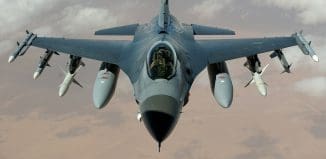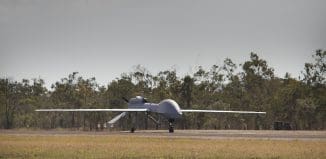Are the Night Vision Goggles Used in the Bin Laden Raid Really Classified?
This post is also available in:  עברית (Hebrew)
עברית (Hebrew)

The $65,000 goggles allow SEALs to clear corners better than the traditional night vision eyepieces, which are like “looking through toilet paper tubes.”
L-3’s Ground Panoramic Night Vision Goggles are not classified, according to officials who declined to be named because they are not authorized to speak publically about the equipment. In fact, these goggles are for sale all over the Internet. You can buy the goggles on Amazon, eBay and other websites starting at $35,000 a piece.
The goggles are made in Londonderry, N.H., by L-3 Warrior Systems’ Insight division, which specializes in night vision and electro-optical technology for the military and law enforcement.
The Pentagon has spent at least $12.5 million on the Ground Panoramic Night Vision Goggles since 2010, according to federal contracting data. In all but one of the 21 contracts, the goggles, helmet mounts or related parts are simply referenced as “GPNVG” or “GPNVG18” meaning someone without knowledge of the system would have no clue what they were.
However futuristic looking they are, the L-3 GPNVG-18s don’t actually represent the future of night vision. DARPA’s AWARE (advanced wide field of view architectures for image reconstruction and exploitation) last year produced a thermal camera that can take thermal images at just five microns, which is half the size of the photons it detects.
At this summer’s DARPA Microsystem Technology Office exposition, the agency was eager to show off the stacked modular architecture high-resolution thermal SMART chip that fits in a smartphone, has a resolution of 640 x 480 pixels, and costs less than $500.
But even these aren’t exactly what the military is looking for. In fact, the Pentagon recently described today’s present night-viewing capabilities as “essential, but dated.”
In September, DARPA put out a call for researchers to pitch the agency on night-vision goggles to replace those currently in military use. Specifically, DARPA wants to “develop technology for and demonstrate potential of compact, lightweight, heads-up broad-band night vision display system for ground soldiers featuring cross-band infrared sensing and illumination for robust all condition viewing.”
In other words, it wants night vision goggles that weigh practically nothing, can switch between infrared and daylight automatically, and can provide and collect data from the wearer in way that doesn’t obstruct view (like the Google Glass). They want the system to run for 24 hours without a charge and come in at less than $5,000 a unit.
Future night vision may come in the form of special contact lenses, as two researchers from the University of Michigan have already created a thin infrared sensor made of graphene that the researchers claim could be adapted into contacts. But the researchers caution that such an application is years away.




























